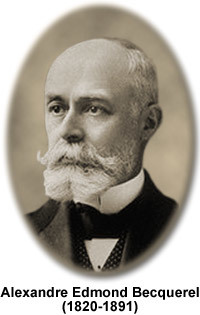The nuclear age was conceived by 19th century physicists and underwent accelerated development thanks to unprecedented scientific cooperation during World War II. In the post-World War II era, cooperative research became less prevalent as scientists across all academic disciplines returned to a more individualized environment.
Nuclear scientists have recently recaptured the cooperative spirit of World War II era nuclear research, however, spurring dramatic advances in nuclear power technology.
Nuclear Advances
In 1896, Antoine Becquerel, studying the natural fluorescence of uranium salts, discovered the salts fogged photographic plates. Further investigation by other researchers led to the identification of alpha, beta, and gamma rays, although their atomic identities remained unknown. During the first two decades of the twentieth century, Ernest Rutherford inferred the energy associated with radioactive decay was about a million times that associated with chemical reactions, and he developed the nucleus model of the atom based on alpha-ray bombardment.
Meanwhile, other physicists were using the neutron to bombard elements across the periodic table. One such physicist was Enrico Fermi, in Rome, who showed almost all elements could be transmuted by neutrons. When Fermi used uranium, however, the results could not be explained based on previous experience. He proposed he was creating transuranic elements, ones beyond the top of the then-known periodic table.
Teams of scientists across Europe worked on the uranium puzzle for years. In 1938 Fermi received his Nobel Prize and emigrated to the United States. Here Fermi worked with Albert Einstein, Eugene Wigner, and John Wheeler to understand the fission of radioactive materials. By 1939 teams in both Europe and the United States determined the number of neutrons emitted during fission and published their results side-by-side in Physics Review.
This was a major step toward developing a chain reaction for an atomic bomb. The rest is history, as success was achieved through ongoing cooperative science. After World War II, however, most scientific research retreated behind closed doors as researchers guarded their work, with little sharing of information.
Cooperative Efforts Return
Fortunately, the clock has been turned back in the field of nuclear research to the days of close cooperation. The best example of this is the Generation IV International Forum (GIF), an organization bringing together technical experts and government representatives with the goal of developing fourth-generation nuclear power reactors through international cooperation.
The GIF began meeting in January 2000, and current state members include Argentina, Brazil, Canada, China, the European Atomic ?Commission, France, Japan, the Republic of Korea, the Russian Federation, the Republic of South Africa, Switzerland, the United Kingdom, and the United States.
First-generation reactors include early prototypes such as the US Shippingport and British Magnox (later named Windscale) nuclear power plants implemented in the 1950s. Second-generation reactors include most currently operating commercial reactors built in the 1960s, which were improvements over the originals. Third-generation reactors include advanced designs from what was learned from the second generation, and they are being built now all around the world.
A fourth generation (GEN IV) encompasses revolutionary designs with safe, sustainable, proliferation-resistant, and physically secure features.
New Systems Being Developed
The Generation IV International Forum selected six systems for further study, including Very High Temperature Reactors, Supercritical Water-Cooled Reactors, Sodium Cooled Fast Reactors, Lead Cooled Fast Reactors, Molten Salt Reactors, and Gas Cooled Fast Reactors. All designs are planned for implementation between 2015 and 2030, based on international collaboration.
In future columns you will hear more about all of these and the pebble bed reactor we described in the last issue of Environment & Climate News. These new nuclear technologies are extremely important because solar and wind power are incapable of providing much economically practical electricity, and nuclear power provides the only dependable, high-volume electricity alternative to coal and natural gas.
Jay Lehr, Ph.D. ([email protected]) is science director of The Heartland Institute. This essay is adapted from two papers which will appear in the forthcoming volume on nuclear energy in the John Wiley & Sons Encyclopedia of Energy, edited by Steve Krivit and Jay Lehr. The articles are “Early History of Nuclear Energy” by Roger Tilbrook,, and “Gen-IV Gas-Cooled Fast Reactor,” by J’Tia Taylor.




